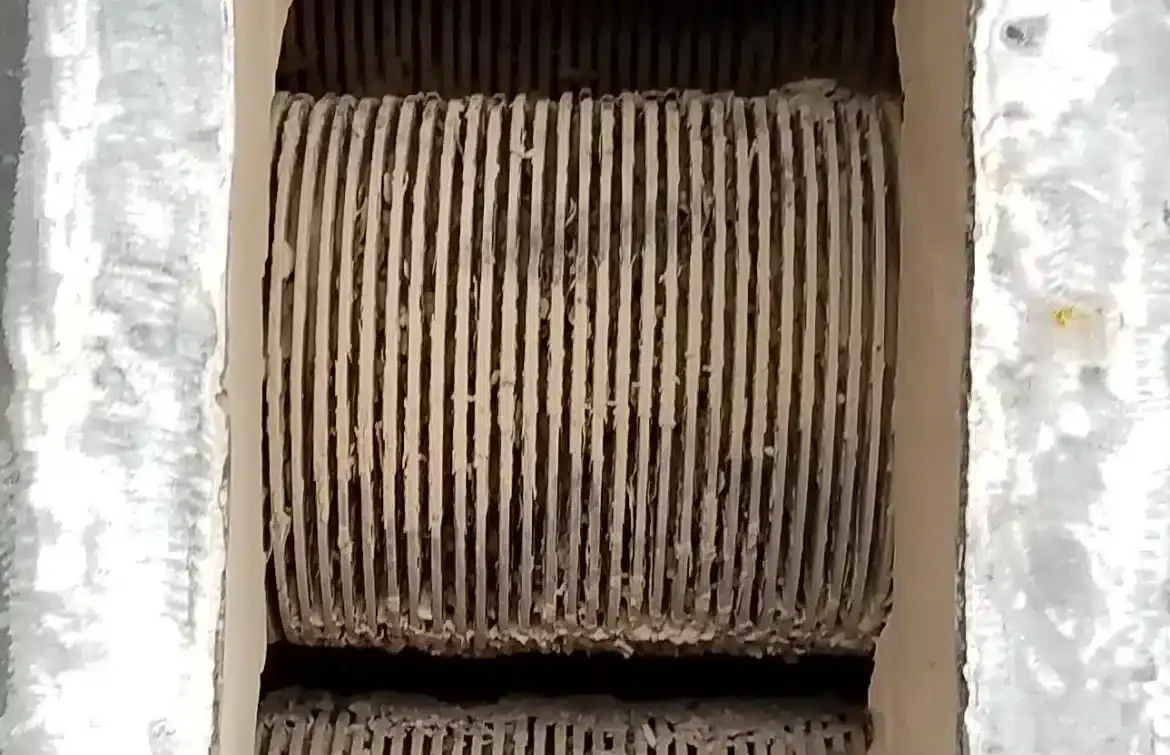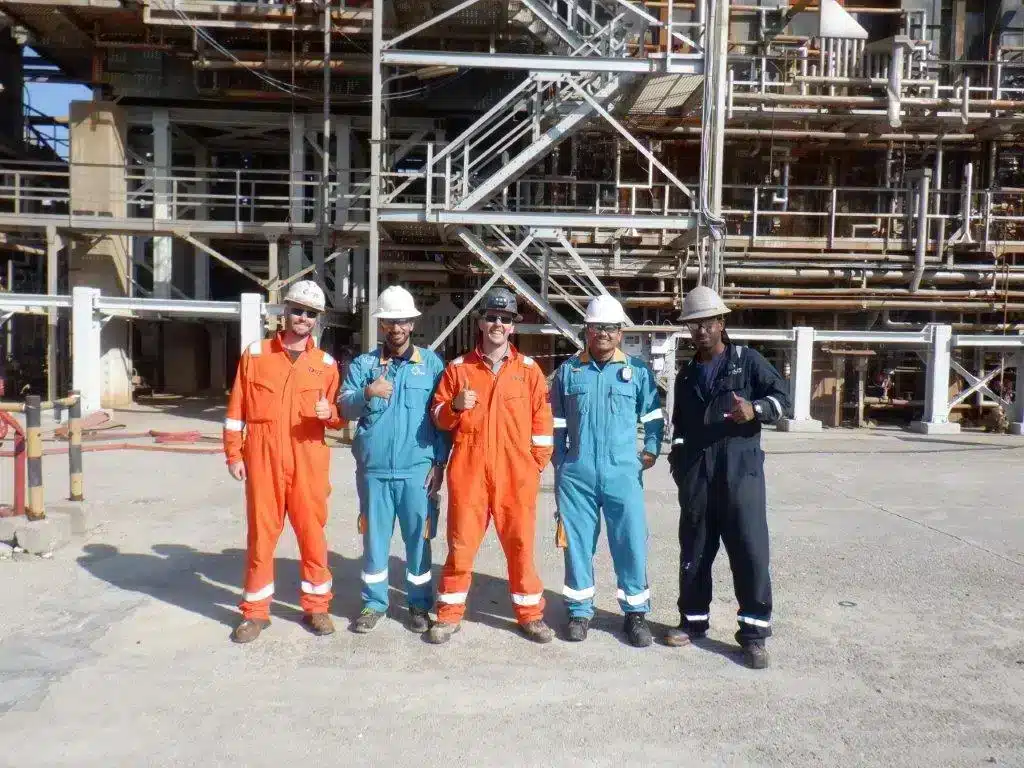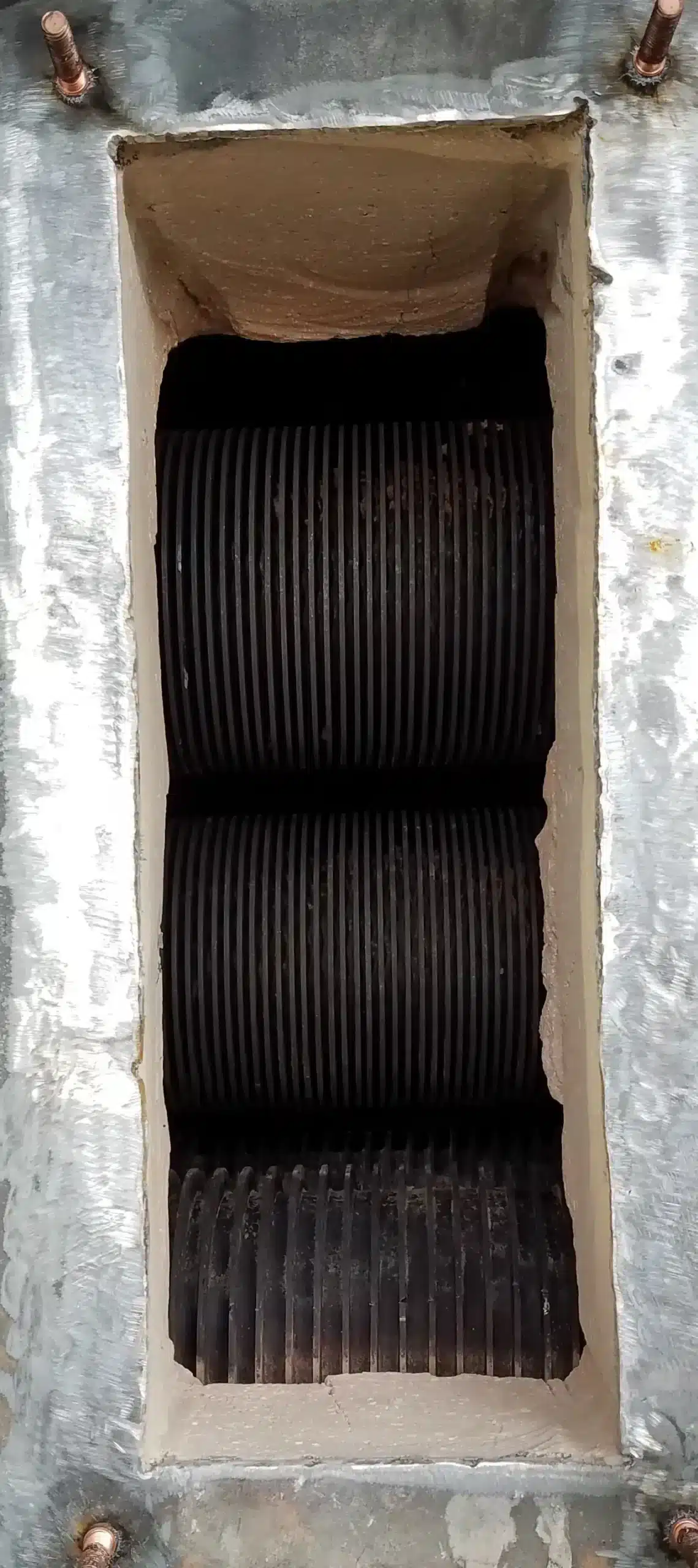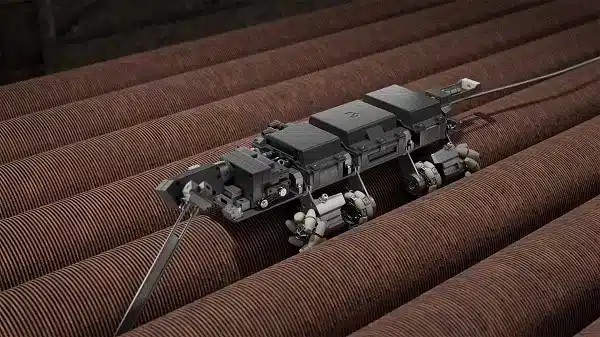Refinery Increases Furnace Efficiency by 1.75% Through Online Convection Section Defouling
IGS Hot-Tek Manages High Stack Temperature
– Rising stack temperature 54% above design threshold
This case study demonstrates how a refinery successfully implemented IGS convection section defouling technology, resulting in significant efficiency improvements including a notable decrease of the refinery’s high stack temperature. After experiencing success with IGS Cetek® coating projects that delivered a 14% increase in throughput for their platforming heaters, the client approached IGS again for hot convection cleaning services, establishing a pattern of continued engagement with IGS technologies across their process train.
Previous Success with IGS
The client initially engaged IGS to address heavy scale issues that were hindering production rates in its platforming heater. Three separate units were affected: two cabin heaters and one 2-cell U-tube heater. IGS performed a thermal efficiency audit which forecasted a potential 10% improvement in radiant efficiency.
The IGS team applied Cetek® thin film ceramic coating, working for 14 days in series and 6 days in parallel to accommodate the turnaround schedule. The post-application analysis, confirmed by the client, showed an actual 14% increase in efficiency, debottlenecking production limits and enabling increased throughput.


Latest Challenge – Declining Furnace Efficiency & High Stack Temperature
More recently, the same refining company faced declining furnace efficiency due to convection section tube surface fouling. A key challenge was managing a high stack temperature, which had risen to 462°F (239°C), well above the design threshold of 300°F (149°C). This, along with declining absorbed duty, prompted an urgent need to regain thermal performance. The main concerns included:
- Declining absorbed duty
- Rising stack temperature (462°F/239°C vs. design 300°F/149°C)
- Need to regain process duty
With a planned turnaround two years away, the client reapproached IGS for convection section defouling of finned tubes while maintaining full operational capacity.
Technical Evaluation & Solution Development
IGS conducted a comprehensive technical evaluation before commencing the project:
- Data Analysis: Review of current operating data and furnace design specifications
- Performance Gap Identification – High Stack Temperature: Determination that stack temperature should be approximately 298°F/147°C if the convection section was clean
- Technical Planning: Analysis of general arrangement drawings to establish optimal access points and proprietary tooling to reach the maximum surface area for the defouling project
- Safety Protocol Development: Creation of project risk mitigation, safety analysis documentation, inspection plan, and method statement for execution under negative draft


Project Implementation
IGS implemented its Hot-tek™ service. The approach included:
- Access Creation: Removal of outer shell and adjacent refractory
- Strategic Convection Section Defouling: Targeting multiple bundles with specialized equipment
- Restoration: Installation of new refractory and plates to the outer shell
- Timeline: Safe completion within eight shifts while the unit remained fully operational
Results and Business Impact
The IGS hot convection cleaning service delivered measurable improvements:
- Stack Temperature Reduction: Defouling ~40% of the convection tubes addressed the high stack temperature, resulting in a 66°F/37°C stack temperature drop, aligning with evaluation targets
- Duty Recovery: 2.46 MMBtu/hr overall furnace duty recovery
- Downstream Benefits: 0.62 MMBtu/hr duty gain for reboiler units and 1.84 MMBtu/hr steam-related duty gain
- Efficiency Improvement: Overall furnace efficiency increased from 87.55% to 89.30% (1.75% improvement)
- ROI: Rapid payback period validated by post-implementation data analysis
Continued Engagement
Due to the successful outcomes and safe execution, the client has expanded their relationship with IGS. They are planning additional defouling projects and have scheduled TubeTech™ Remote Operated Vehicle (ROV) deployment during the next turnaround for comprehensive defouling (90-95% fouling removal). The client is targeting achievement of the 91.82% design efficiency and actively evaluating other process limited units for potential IGS technology applications.
Conclusion
This case exemplifies the proven IGS approach of addressing the entire process train with targeted technologies. By first solving radiant section limitations and addressing convection section fouling, the client has built operational momentum through their ongoing relationship with IGS. The measurable efficiency gains, achieved while online and offline, demonstrate the value proposition of IGS technologies for process optimization and asset integrity improvement.
TubeTech™ Remote Operated Vehicle
TubeTech’s patented robotic and remote fouling removal technologies remove over 90% of fouling, even on the most fouled assets.
With multi-million R&D investment, TubeTech™ have developed a reputation for leading innovation. TubeTech™ have invested heavily in developing equipment and processes that make fouling removal safer and more thorough.

Free consultation with an IGS Subject Matter Expert
IGS is here to provide information, answer questions and create an effective solution for your needs.

